Configuring Austlang and Custom Languages for Primo
Introduction
Out of the box, Primo supports the Austlang language codes under the Language field of the record's full details and under the Language facet in the results. In addition, you can define additional language codes using the Customized Languages Code mapping table, which currently defines only the Austlang language codes.
Previously unsupported codes that displayed the Undetermined value can now display correctly in the record's details and facets:
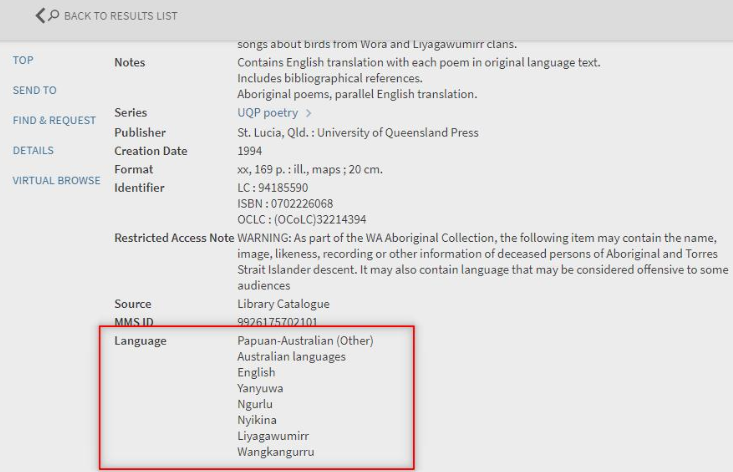
Updating the Configuration Tables
The following tables define the Austlang languages and any new languages that you want to support. The Austlang languages have been added for you.
-
Customized Languages Mapping mapping table (Primo Home > General > Code Tables) has been added to support the mapping of the customized languages (such as those associated with Austlang). To add other languages, create a new mapping row and specify the following fields:
-
sourceCode1 – Specify the language's code.
-
targetCode – Specify the language's name.
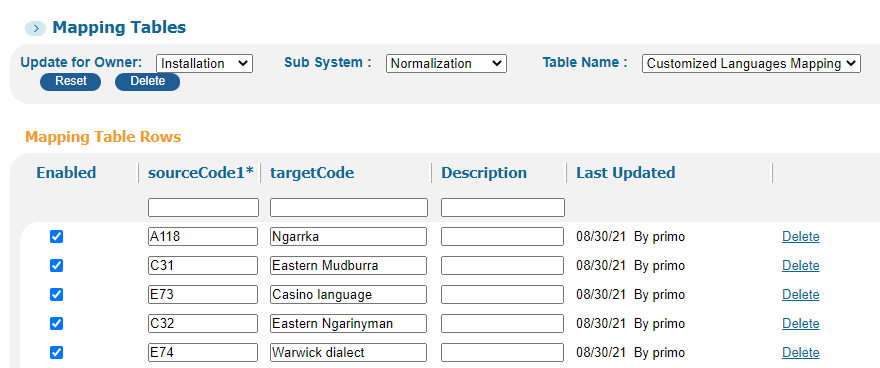 New Mapping Table - Customized Languages Mapping
New Mapping Table - Customized Languages Mapping-
A re-index is required to support the new out-of-the-box languages codes.
-
The languages in this mapping table are not supported in the Languages field on the Advanced Search page.
-
-
Customized Languages Codes code table (Primo Home > General > Code Tables) has been added to allow you to customize and translate the labels for the customized languages.
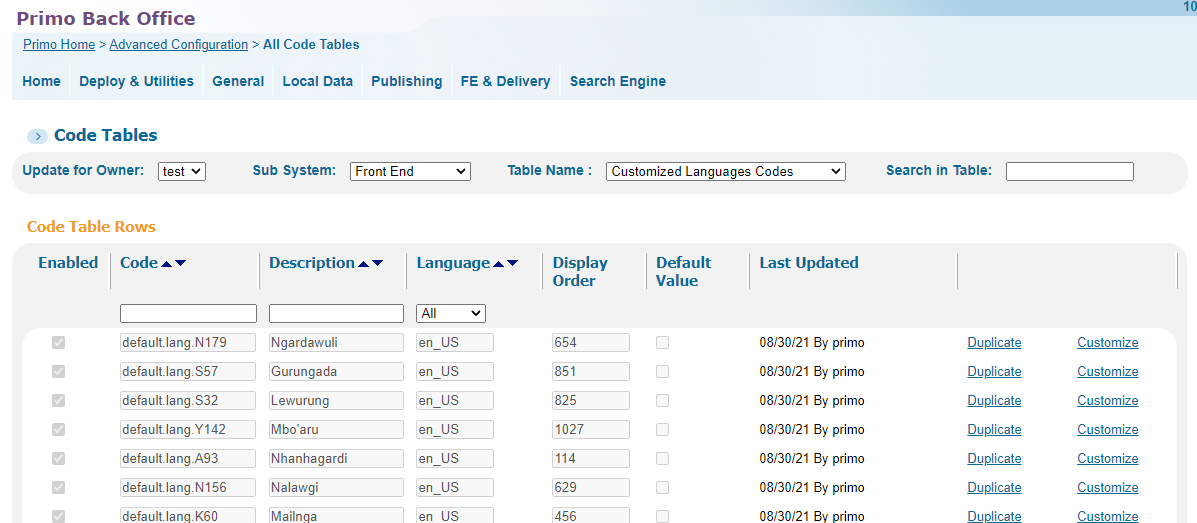 New Code Table - Customized Languages Codes
New Code Table - Customized Languages Codes
Updating Your Source Records
To utilize these language codes, make sure that you define the MARC 041 field in your records with the following information:
-
2nd indicator: Set to 7.
-
Subfield a: Specify your language codes.
-
Subfield 2: Specify the language type (such as austlang).
For example:
041 #7$$aN153 $$aA10 $$aN101 $$aK3 $$aL27 $$2austlang
Updating the Normalization Rules
After you have updated the source records, you will need to update your normalization rules to support custom languages (which may have codes of variable length) in the facets and record's details.
-
For the display/language field, modify the following out-of-the-box normalization rule to exclude the second indicator -7 (Primo Home > Local Data > Normalization Sets):

-
Create a new rule that includes the second indicator 7:
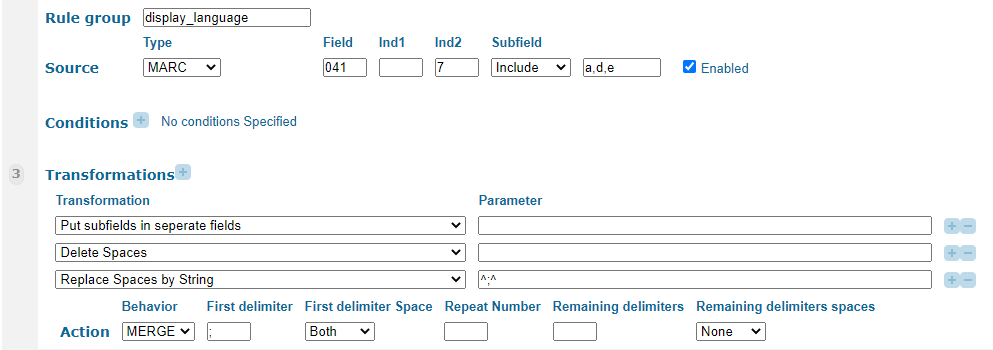
-
For the facet/language field, modify the following out-of-the-box normalization rule to exclude the second indicator -7:
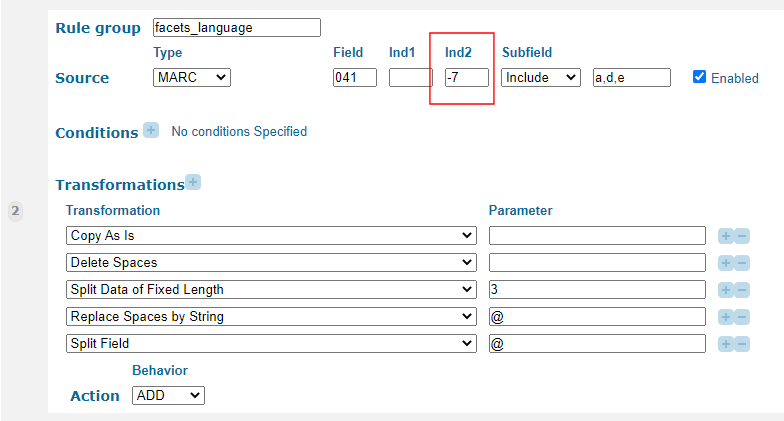
-
Create a new rule that includes the second indicator 7:
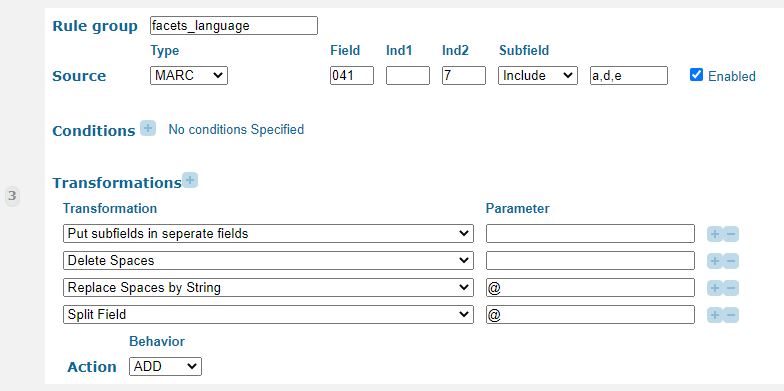
-
Re-normalize your data.

